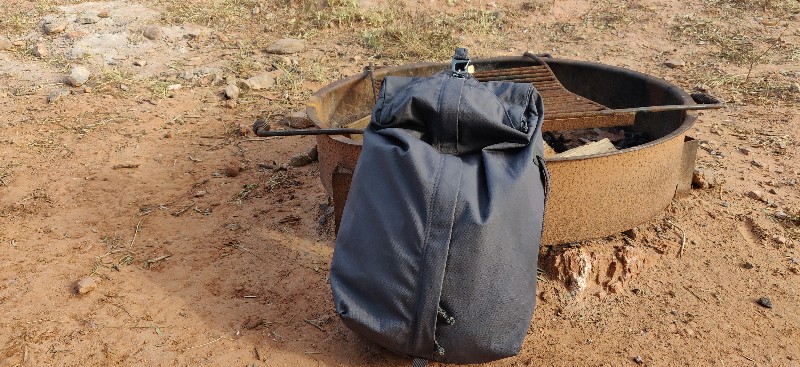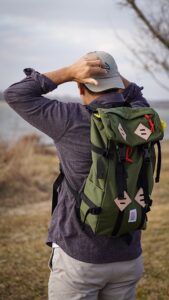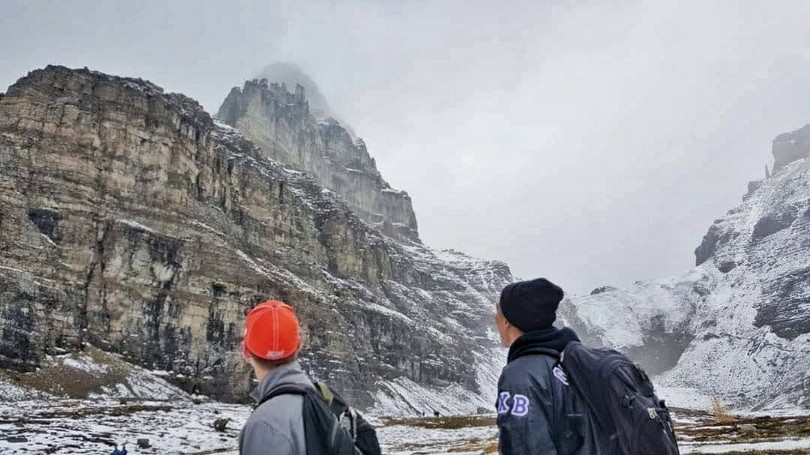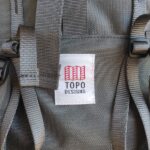One of the cardinal rules about non-rev traveler is to never check a bag. This isn’t because we don’t trust our friends at the airport (the men & women who help transport & load luggage are amazing people), but rather because we need the flexibility to change destinations at a moment’s notice. Adjusting your trip because you got bumped off of a flight is a lot easier if on your back instead of underneath the plane,
Going carry-on-only has its benefits for regular passengers too. Avoiding checked luggage means avoiding long check-in lines & crowded baggage claims (not to mention baggage fees that some airlines charge).
If the idea of condensing your packing list to a single carry-on bag scares you, you aren’t alone. Rest assured that it is a lot easier than it may sound. Employing some new packing strategies is all it takes to begin your onebag journey.
What is onebag travel?
Onebag travel, as the name suggests, is the philosophy that you can travel anywhere with just a single bag. Popularized by the r/onebag subreddit, onebag travelers prioritize simplicity & intentionality when packing your bag.

Onebag travel is all about finding the balance between utility & mobility. Any carry-on bag can serve as your onebag, but a good starting point is looking for a bag in the 25L-45L range.
You want to keep your packing list short enough that you can still fit into a single carry-on bag without sacrificing any of your travel essentials. For long-term travel, packing one week’s worth of clothes is the sweet spot; any more than that and you may start running into capacity constraints.
Incorporating minimalist principles into your travel patterns have a tremendously positive effect. By packing only essential items into a carry-on size bag, you minimize your chances of being bogged down by cumbersome luggage.
Why should I stop overpacking?
Have you ever heard the old military adage “proper preparation prevents piss-poor performance”? That’s exactly how I view overpacking; it is a sign of poor planning.
There are plenty of reasons why you should stop overpacking, but here are 3 of my favorites:
Save Money
Money talks, so let’s start there. Many airlines charge a fee for checking a bag (especially if your luggage exceeds the baggage weight limits).
Making the conscious decision to only pack a carry-on bag frees you from being forced to pay for checked luggage (and lets you avoid buying large suitcases to begin with).
Increase Your Mobility
Maybe you don’t have to have to pay for checked bags on your airline, but that’s not the only reason why you should strive to travel with only a carry-on bag.
No checked baggage means not having to wait at baggage claim once you arrive at your destination. The time you save there may not seem like a lot, but leaving the airport as soon as you walk off the plane is a liberating feeling.
Once outside the airport, having a smaller carry-on means getting around at your destination is easier. Have you ever tried to roll a large suitcase over European cobblestone? That task is infinitely easier if the only baggage you travel with is a duffel bag or travel backpack.
Simplify Your Life
An interesting thing occurs when you are packing large suitcases: you start to find extra things to fill in the empty areas of your bag just for those just-in-case moments. How many times have you brought along gadgets that never got used on your trip? What about packing 6 outfits for a quick weekend trip?
By planning out what you need for each trip ahead of time, you won’t have to dig through your bag to find stuff at your destination or make stressful outfit decisions each day. Plus, it means having to look after multiple bags everywhere you go.
How can I stop overpacking?
Now that you recognize the benefits of onebagging, let’s talk about packing tips & strategies to help you consolidate everything that you need to fit for your next trip into a single carry-on bag.
Plan a capsule wardrobe
Do you ever suffer from analysis paralysis? If so, you might have a hard time choosing outfits (and thus end up packing too many items). A capsule wardrobe solves this by simplifying your closet with versatile pieces that all match.
This makes packing infinitely easier: by having a wardrobe full of clothes that compliment each other, you can mix & match all of your clothes. Instead of trying to plan out multiple outfits, you just need to pack enough tops & bottoms for your trips knowing that they will all match.
Ranger Roll Your Clothes
Did you know that tightly rolling your clothing (instead of folding them) can save you space in your carry-on bag? Rolling items like t-shirts, pants, skirts, and socks into little burritos is a simple way to reduce the footprint of your clothing. Avoid rolling easily creased clothing (like dress shirts) or bulky items (like sweaters) because they actually become less packable in roll form.
Plus, rolling your clothes gives you the added benefit of extracting a specific item from your bag more easily because it won’t be covered underneath other clothes (this is especially helpful when you aren’t unable to unpack).
Leverage Internal Organization
Many purpose-made travel bags have built-in pockets or organizers to help you keep things separate. For example, my eBags Pro Slim Weekender has a zippered pocket in the main compartment that is perfect for keeping my socks & underwear separate from the rest of my clothes. Being strategic with you packing will save you time & space.
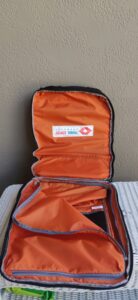
Do you travel with a duffel bag or carry-on suitcase that doesn’t have any internal organization? Allow me to introduce you to packing cubes! These cubes came in shapes & sizes, but serve a simple purpose: organize & compress your clothing. By stuffing your clothes into packing cubes, you can tailor the level of organization to your packing list and take advantage of their compressing properties. Personally, I travel with eBags packing cubes but I’ve heard good things about Eagle Creek’s sets as well.
Wear Your Bulkiest Clothing/Shoes
The easiest way to remove bulk from your bag is to wear it. Whenever possible, try to avoid packing bulky items like jackets or extra pairs of shoes.
When you do have to travel with them, wear them instead of packing them. When I am traveling for a hiking trip, I always wear my leather hiking boots on the plane because I know they would take up more room in my bag than my sneakers. The same goes for large raincoats or jackets: wearing them on the plane will free up more space for other items in your bag.
Reconsider Bulky Electronics
While clothes will make up the majority of your bag, consider how many electronic devices you truly need to travel with.
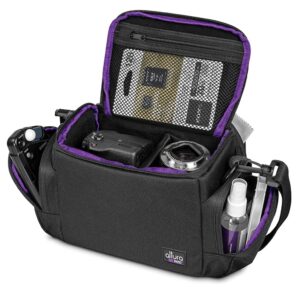
This is particularly hard for me because I have come to appreciate my gadgets. I have a pair of noise-canceling headphones that I adore, a plug-in steamer that allows me to avoid ironing, a mirrorless camera set, and a tablet that I use for various tasks. I’d love to bring them all along on every trip, but all of them combined is enough to fill up a small backpack.
I leave the steamer at home if I’m traveling to a hotel that I know will have an ironing board, and the camera bag only comes with me on trips where the phone on my camera just won’t suffice. The space I save by leaving those two items at home is easily worth 2-3 days worth of clothing.
Re-evaluate Your Toiletry Bag
Your toiletry bag is another area where we can trim some fat. Did you pack lightweight essentials or did you bring along your massive electronic toothbrush?
Consider how long you plan on staying at your destination and what you will have access to while there. If you are staying at a hotel or resort, there is a good chance soap & shampoo will be included with your room. If not, odds are that you will be able to purchase the necessities upon arrival. Is it really necessary to weigh down your bag with redundant items?
Consider a Packable Daypack
Having a large travel backpack as your carry-on bag is a very convenient way to travel, but using that same bag at your destination to run errands or take day trips can be a bit overkill. I always travel with an extra backpack that is perfect for day hikes or trips to the grocery store. Something in the 10L-20L range should suffice.

While onebag travel conjures up images of a traveler with a large backpack carrying all of their stuff, many airlines allow passengers to bring a carry-on bag & a “personal item” onboard. When given the opportunity, I will throw some items in my smaller daypack and wear it on my back while stowing my larger carry-on bag in the overhead compartment.
What luggage is best for OneBag travel?
The best luggage for traveling is whatever you currently have! There is no need to go out and buy a fancy bag to do the same job as something you already own. Onebag travel is primarily about the mindset: pack light, worry less, and experience more.
If you do happen to be in the market for a new bag, I have reviewed dozens of travel backpacks & carry-on bags by testing them on my trips around the world. Here are my current favorites that I am traveling with right now:
- Traveling with just a carry-on bag: Topo Designs Mountain Pack
- Traveling with a carry-on bag & a personal item: Blue Claw Worton Weekender duffel bag & Timbuk2 Blink Pack
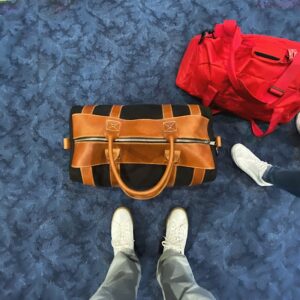
Final Thoughts
Switching to a onebag philosophy has changed how I travel forever. I only check a bag when I legally have to (like when I need to bring home a new bottle of bourbon) which makes up less than 10% of my flights.
Speaking as a chronic overpacker, I know how challenging it is to give up the precious cargo space provided by checked baggage. By following some of the strategies above, you too can condense your packing list down to a week’s worth of essentials that all fit into a single carry-on bag.
Now go out into the world without the burden of a checked bag! When you do, come back and let us know what tips you would give to other travelers who want to try onebagging on their next trip.
